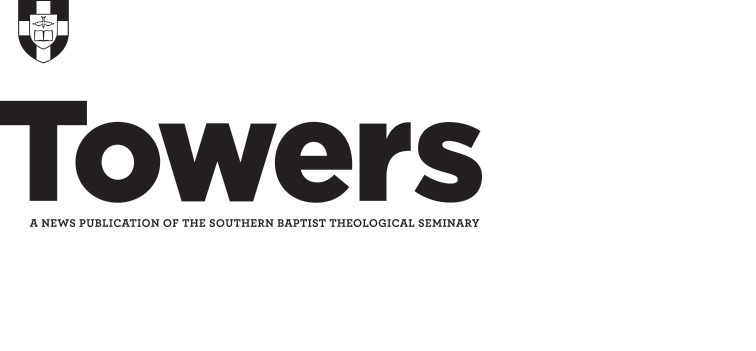Among the colleagues and contemporaries of Andrew Fuller, Baptists can find much to admire in the ministry of John Fawcett. From a young age, Fawcett had a love for Scripture, but he became particularly enamored with George Whitefield when the great evangelist passed through Bradford in 1755 and spoke from John 3:14. Fawcett later recalled, “As long as life remains, I shall remember both the text and the sermon.”1 It was the influence of William Crabtree and James Hartley, however, that drew him into the Baptist fold, led him to believer’s baptism in 1758, and shepherded him from a call to ministry in 1760 to his first public sermons in 1763.
His first invitation to preach outside his own congregation was to supply the pulpit at the Baptist church in Wainsgate on Dec. 18, 1763. At first, he was invited back every other week, then regularly enough that he moved there with his wife in May 1764, leading to his formal hiring — by a unanimous vote — and ordination in July 1765. By 1769, the church was experiencing revival:
The place became too small to accommodate the stated hearers, some of whom came regularly many miles every Lord’s Day. A gallery was erected and several other improvements made in the interior of the place of worship.2
His reputation as preacher grew to the extent that he was invited to substitute for the ailing John Gill at Carter Lane Baptist Church in London. Upon Gill’s death, Fawcett was offered the position. It was a move he seriously considered. In spite of its growth, the church at Wainsgate struggled to provide for his growing family; some in his flock “were well aware that what they had been accustomed to raise could not afford an adequate support.”
Part of the furniture and books were sold, and other preparations made for his departure; but his affection for his little flock, which he had so long tended “in the wilderness” would not suffer him to leave them. … His attachment to them was so deeply fixed, that he concluded, at once, to cast himself upon Providence, and live and die with them.3
His near departure for Carter Lane is considered to be the inspiration behind one of Fawcett’s most beloved hymns, “Blest be the tie that binds.” The hymn, originally extending to six stanzas, is almost always shortened to four, with the fourth becoming a benediction:
When we asunder part,
it gives us inward pain;
but we shall still be join’d in heart,
and hope to meet again.
The fifth stanza builds upon the anticipation of gathering again, while the sixth expands this view heavenward to a more perfect reunion:
From sorrow, toil and pain,
and sin we shall be free;
and perfect love and friendship reign
thro’ all eternity.4
This longing for eternal reconciliation is an emotion he would come to know very well in the following years. He lost his son Stephen to smallpox in 1774, his mother in 1782, and his daughter Sarah in 1785. These losses made Fawcett a more endearing pastor. In Fawcett, this “long-continued and heavy domestic affliction” brought about “the tenderest sympathy” towards those in his congregation who were also afflicted.5
In 1779-1780, he lost four close friends, including his mentor James Hartley. Fawcett’s elegaic poem to Hartley, “Reign of death,” published together with a funeral sermon by Crabtree, became his first connection to Andrew Fuller. Thirteen years later, Fuller confided: “I have known and loved you ever since I saw your Elegy on dear Mr. Hartley. My heart … dissolved in reading over that Elegy.” When Fawcett’s collection of hymns was published in 1782, Fuller took particular interest in the one beginning, “Dark was my soul, and dead in sin,” which he said was “full of mournful pleasure.”6
The paths of these two pastors eventually drew closer when Fawcett became “a steady and zealous friend” of the Baptist Missionary Society.7 In 1793, Fawcett published a pamphlet on behalf of the Society, “Considerations relative to the sending of missionaries to propagate the Gospel among the Heathens,” which achieved widespread circulation. The two men also served as trustees and contributors for The Evangelical Magazine, the profits from which went to charitable causes.
Fawcett’s own ministry continued to thrive. In 1777, a new chapel was built for him in nearby Hebden Bridge. He developed a ministry academy there and trained a new generation of pastors. In 1811, he published a two-volume family Bible with commentary and illustrations. His influence lasts through his support of the spread of the gospel, his voice in Christian congregational song, and his efforts in training the generation of pastors that would follow him.
For more information and resources related to John Fawcett, visit the Archives & Special Collections in the James P. Boyce Centennial Library.
NOTES
1. An Account of the Life, Ministry, and Writings of the Late Rev. John Fawcett (1818), 16.
2. Account, 149.
3. Account, 173-174.
4. Hymns Adapted to the Circumstances of Public Worship (1782), 188-189.
5. Account, 268.
6. Account, 295; Hymns 8-10.
7. Account, 378.




